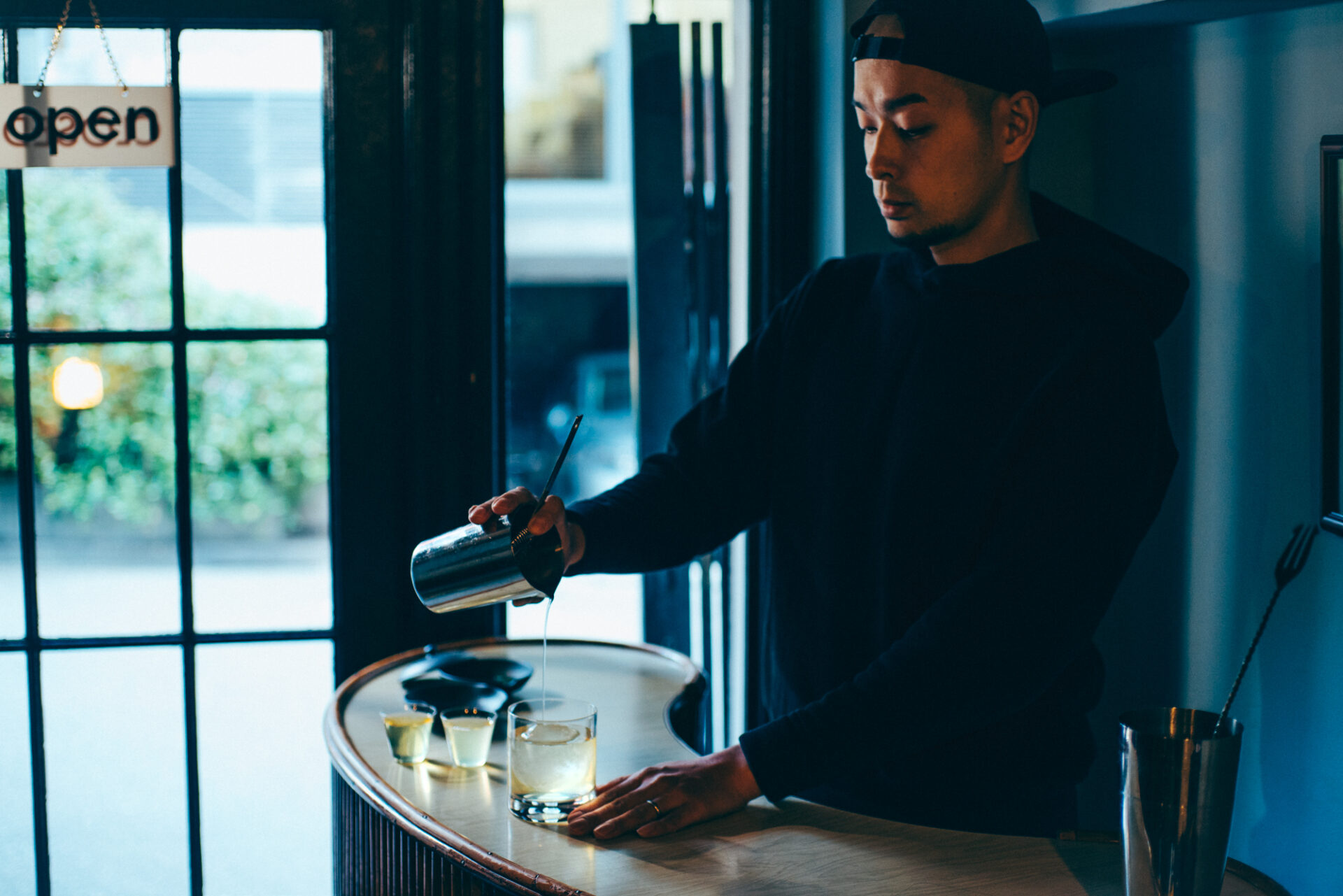Cocktails and tea. Alcohol and non-alcoholic drinks. Although these two genres of drinks have traditionally evolved without much crossover, a new world of tea cocktails has recently emerged.
Fumitake Ohba is a bartender who is a leader in the new tea cocktail movement. With a background in Japanese tea and the latest in mixology cocktails, he has served drink pairings for world-class restaurants and has attracted worldwide attention.
Ohba has instigated a number of innovations in the beverage industry, and we spoke to him about the appeals of tea cocktails and the world of mixology.
*Mixology is a term that combines the words ‘mix’ and ‘ology (science or study).’ A mixology cocktail is one that is made without the use of existing liqueurs or flavored syrups, but by combining different ingredients such as fresh fruits, vegetables, herbs and spices with spirits or distilled beverages.
How Ohba met mixology
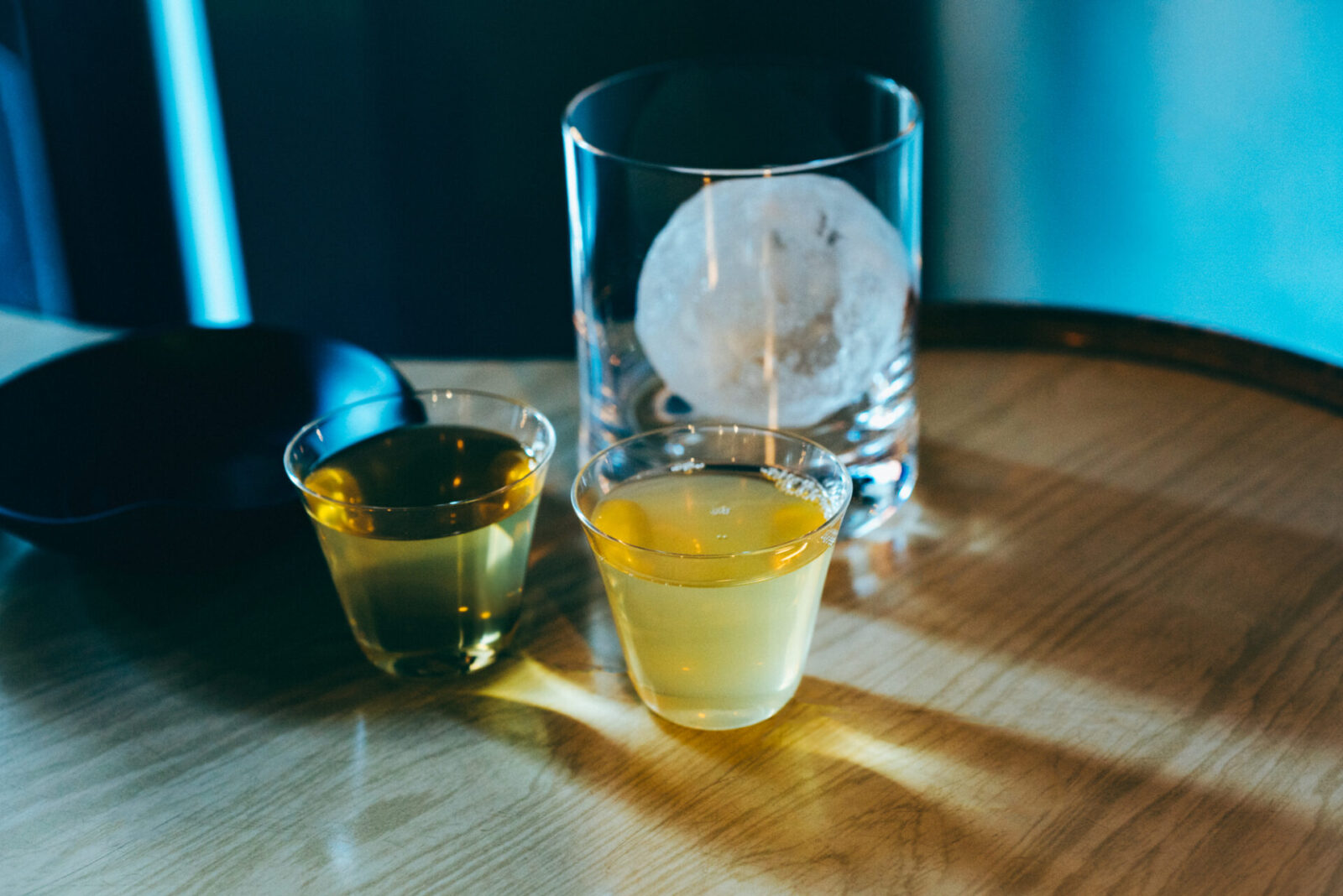
Ohba is a former member of the Japan Self-Defense Forces. He always enjoyed drinking and he began bartending at the age of 20. He worked in top bars and his honest and friendly personality helped him find success as a bartender. He has competed in a number of competitions run by the Nippon Bartenders’ Association and has achieved impressive results.
At the age of 24, Ohba was presented with an opportunity to work at the Mixology Bar run by Suuzo Nagumo, who is known to be the first and leading mixologist in Japan.
Mixology cocktails, which does not use existing liquors or flavored syrups but creates new flavors by combining fruits, vegetables, herb and spices with spirits and other distilled drinks, sparked a new curiosity in Ohba.
“When I wanted to make cocktails more creatively, there was a limit to what I could do with existing liquors. A part of me has always looked up to culinary artists, so I was very attracted to the world of mixology where drinks can be created from the base up.”
Ohba’s mixology cocktails are created by imagining the final flavor first and building the drink from there.
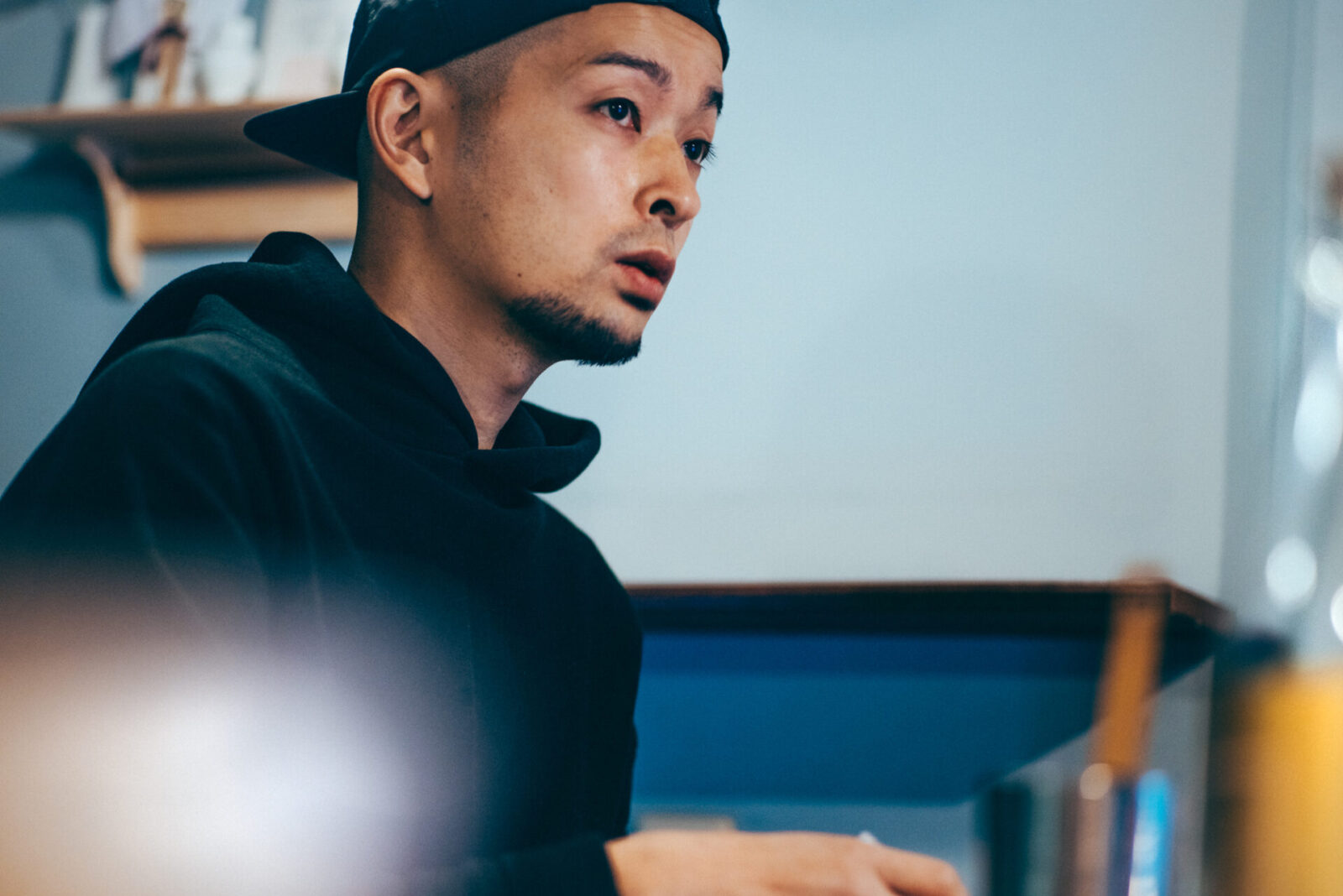
“Traditional cocktails are made with a liquor as the base flavor and the flavor is enhanced from there. With mixology, the goal of creating a certain flavor comes first. In order to achieve that flavor, you make your own ingredients.”
“For example, if I wanted a more bitter flavor than that of the existing Campari liquor, I can choose a liquor with a simple flavor and add herbs, spices and tea to soak them in. I can create flavors that are not available in ready-made products.”
Creating complex flavors without relying on existing products takes a lot of extra time and effort, and this made Ohba even more committed to the creative process of mixing drinks.
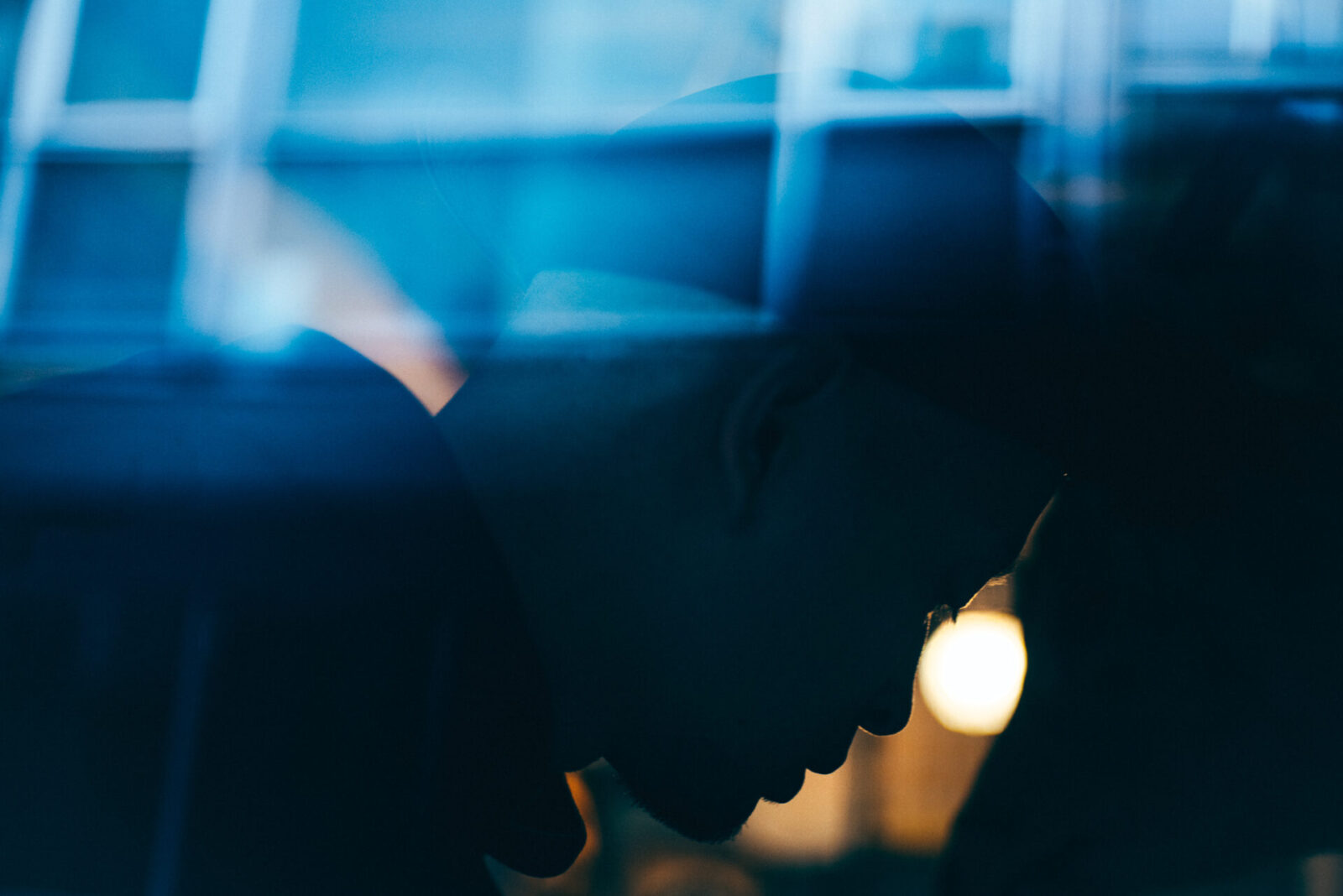
The infinite possibilities of tea cocktails
When Ohba first started exploring the world of mixology, he considered going abroad to gain experience in the frontlines of bar culture, but he instead decided to pursue the world of Japanese tea.
The reason he changed his mind was because he foresaw a future where people will be less inclined to drink alcoholic beverages. Ohba wanted to explore the world of non-alcoholic beverages and decided to study the fundamentals of tea at a tea shop, the Sakurai Japanese Tea Experience.
The Sakurai Japanese Tea Experience is a specialty store for Japanese tea where customers can enjoy carefully selected tea leaves from all over Japan that are roasted in-house. They also serve original tea liquors which are made by soaking tea leaves in alcohol.
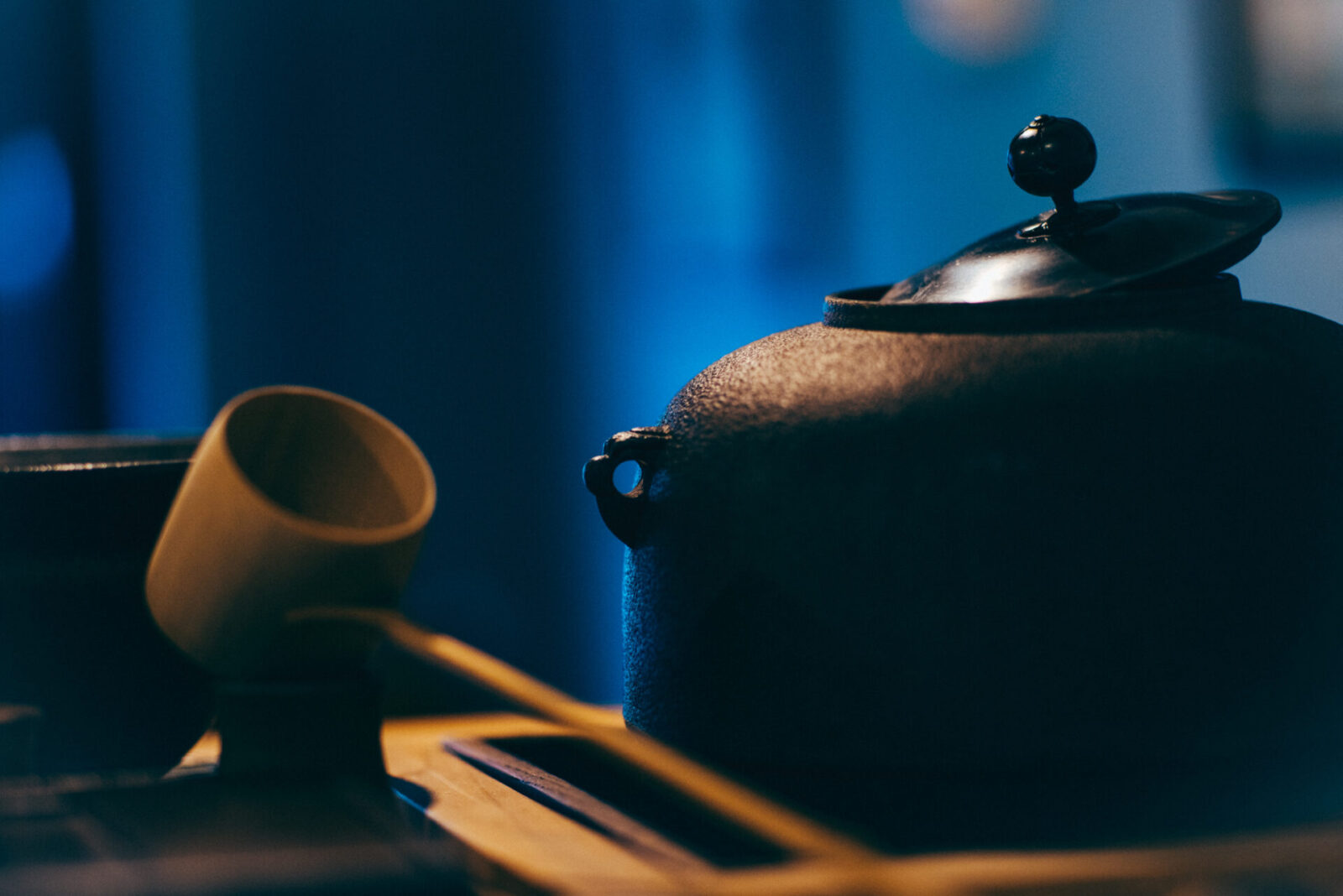
Ohba was enthralled by the world of tea and liquor and worked in their shop for a year.
“All the tea that was delivered to the chief, Shinya Sakurai, were top of the line tea from all around Japan, so it was a great learning experience for me. During the year that I worked there, I was able to work with most of the major teas, from the northernmost to the southernmost tip of Japan.”
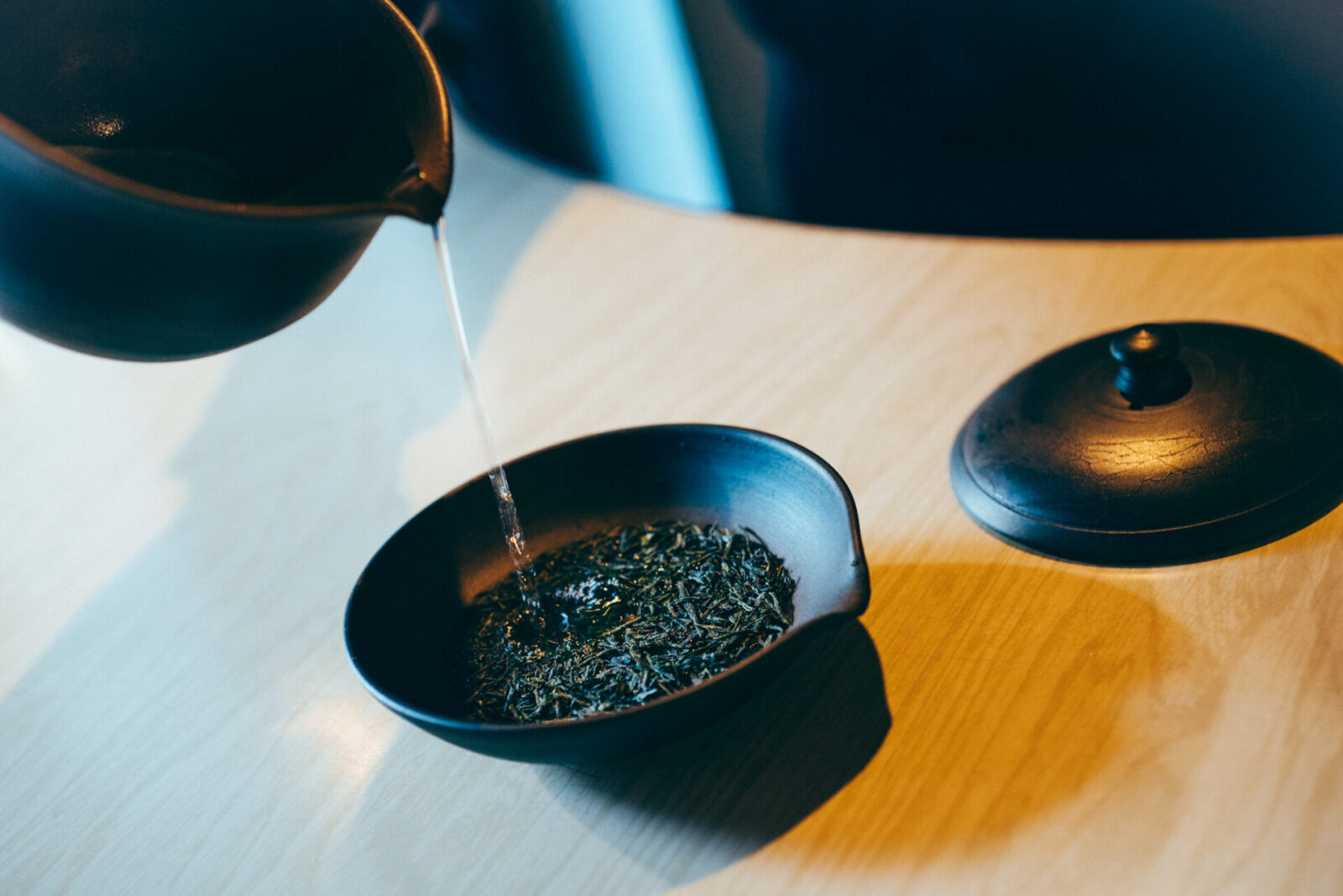
During his experience at the shop, Ohba not only learned about the latest and most advanced approaches to tea, but he also felt the endless possibilities in the combination of tea and liquor.
“There were already about five different combinations of tea and liquor in the store, such as gin with sencha and rum or whiskey with fermented teas. I wanted to expand and segmentize the selections even further so I developed about 18 more combinations.”
Ohba says that tea and cocktails share a commonality in that they can be enjoyed as both an alcoholic and non-alcoholic drink. The possibilities of combinations in tea cocktails were endless.
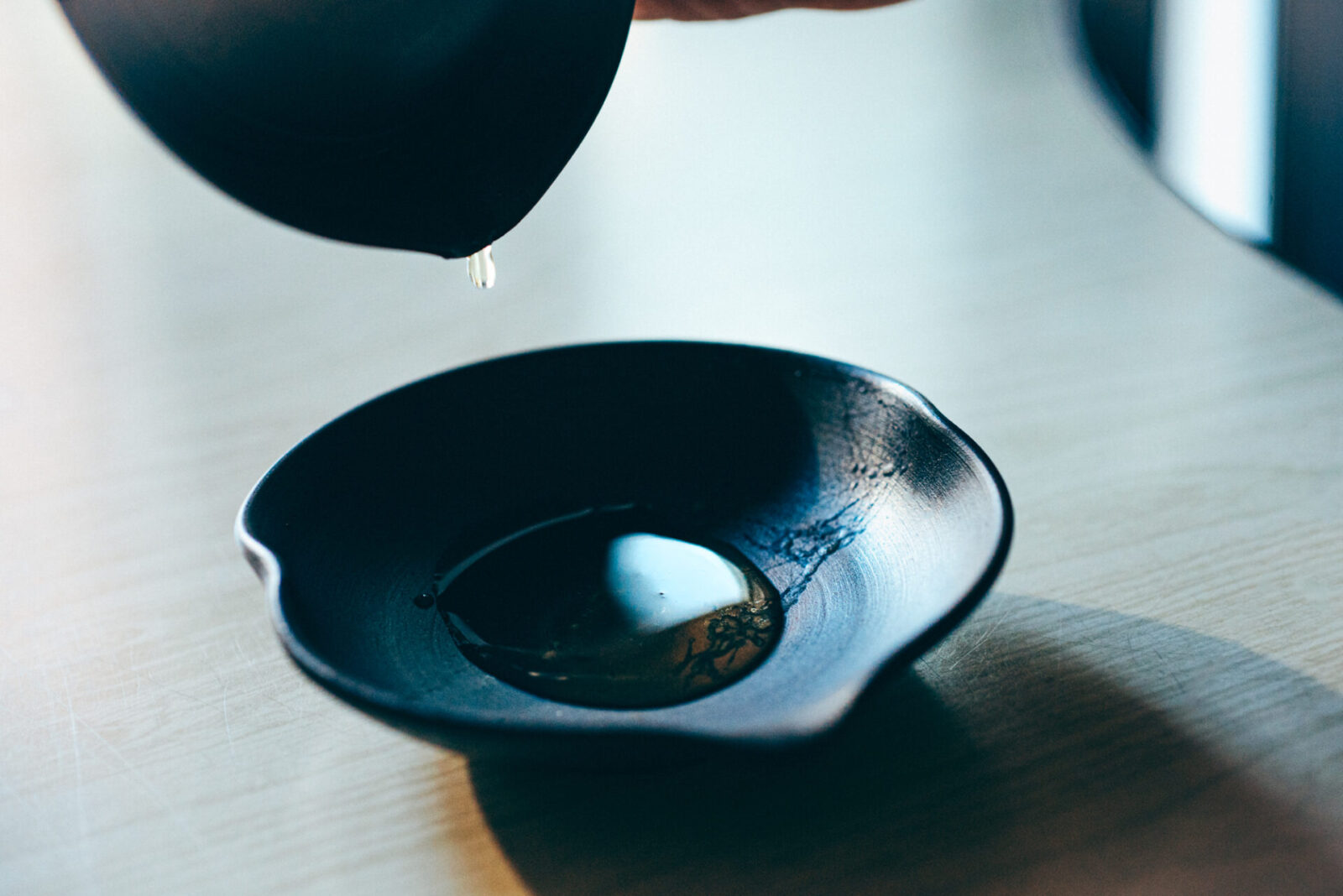
Pairing cocktails with French Cuisine
After Ohba explored the world of tea and liquor combinations at the Sakurai Japanese Tea Experience, he began working at Restaurant Florilège, a leading French restaurant in Japan ranked third in the list of “50 Best Restaurants in Asia.”
From 2017, he spent two years creating drink pairings to accompany the dishes of Chef Hiroyasu Kawate and his pairings were highly acclaimed by food critics around the world.
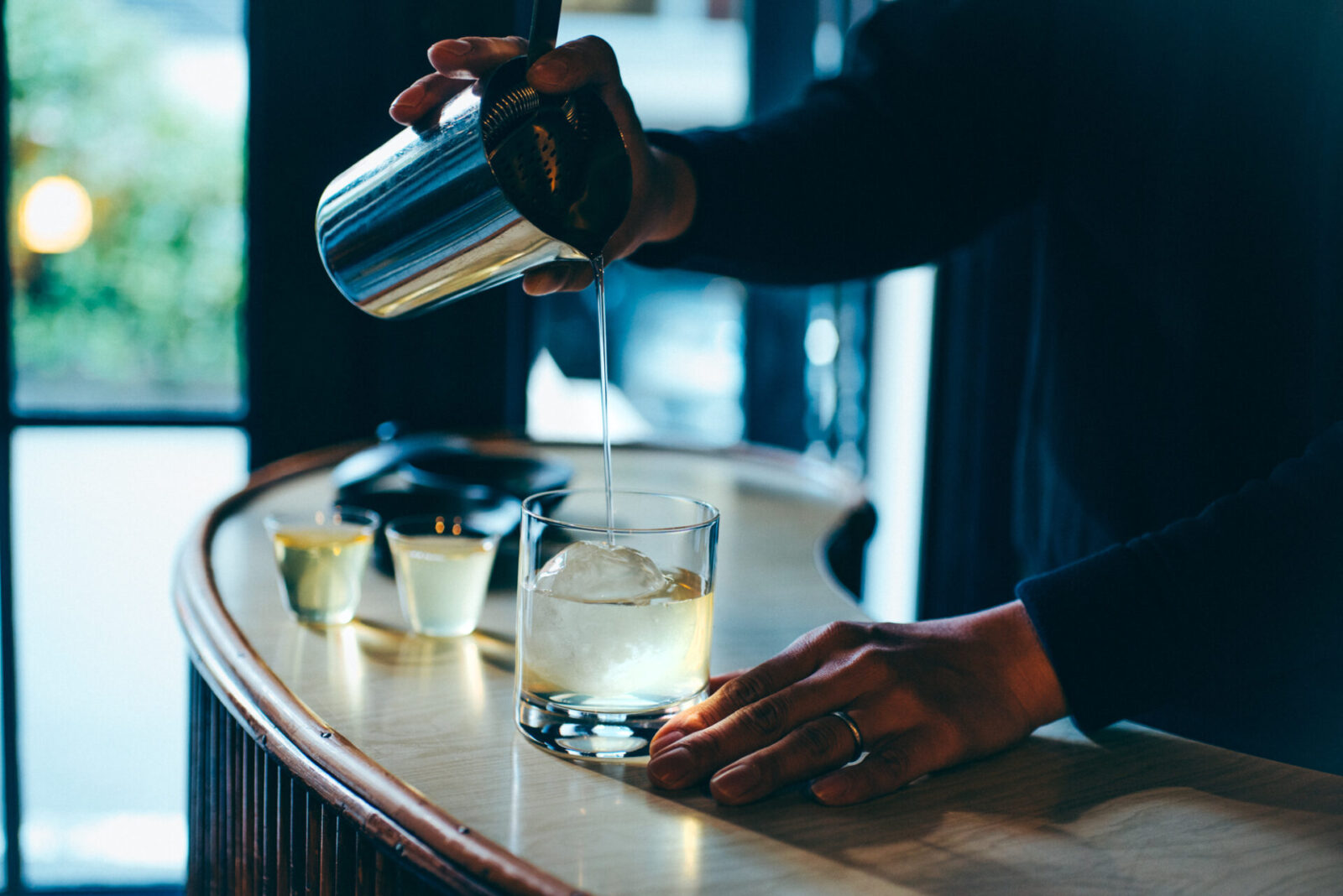
“In the drink pairings at Restaurant Florilège, we used the same ingredients used in the dishes to flavor the drinks. For example, with the vegetables used in the dish, the leaves would be used for the food and the stems would be soaked and used to flavor the drinks. Utilizing the same ingredients and left over parts not only allowed us to create a connection in flavor, it also made the meals more sustainable by reducing food waste.”
“The finest ingredients from all over Japan were delivered to Chef Kawate, and they even had the best selection of Taiwanese and Chinese teas so I had the privilege and rare opportunity to work with the best ingredients available.”
“Chef Kawate never makes the same dish twice. I needed to prepare drink pairings for all the 11 dishes in the course meal everyday, so naturally the materials and techniques I used expanded in number.”
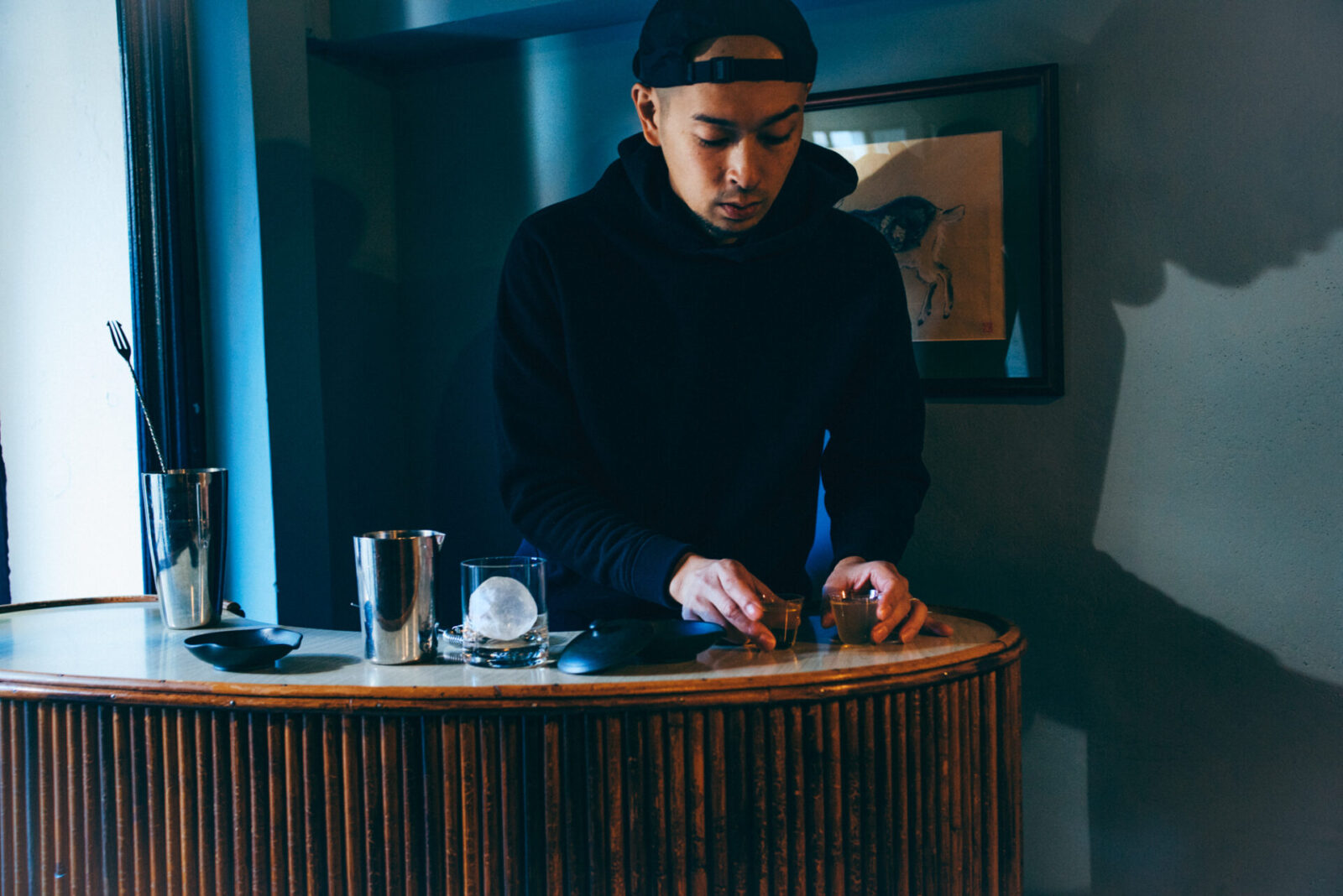
The new techniques and steps led directly to the development of new flavors. The chef’s dishes, top of the line ingredients, daily challenges and training allowed Ohba to fully expand his potential.
In addition to the gin, vodka, brandy and other alcoholic drinks that Ohba used as the base to add fresh ingredients and make new cocktails at Restaurant Florilège, there was also a high demand for non-alcoholic drinks which led him to using various flavor essences, juices and teas to create his pairings.
“The tea by itself was delicious, but we explored different ways to create new drinks. We would combine tea with spices or smoke the thick stems of three year bancha tea to add a smoky aroma. If there was a carpaccio or a fish dish in the course, we would serve a tea that is flavored with broth from the bones and left over parts of the fish. In the two years I worked there, I was able to experiment with all possible techniques.”

A non-alcoholic cocktail made of fish broth, tomatoes and tea
Ohba prepared a non-alcoholic cocktail that was inspired by a pairing he made during his time at the restaurant for us. The drink is made with fish broth, tomatoes and tea.

The drink is non-alcoholic and made with fish dashi (broth), tea and sweet tomatoes. The combination of these ingredients create a complex and rich aroma.
The liquid in the rocks glass has a noble presence and your mouth is filled with the combined delicate flavors as you sip which then seeps into your body.
To make this drink the tomatoes are blended in a blender and passed through a filter to make a clear tomato juice. Next, bonito broth and a tea with strong umami are added in a 3-1-1 ratio (adjusted to your taste and depending on the thickness of the broth).
For this drink, Ohba brewed sencha tea at a low temperature of 40 degrees Celsius for a little over three minutes.
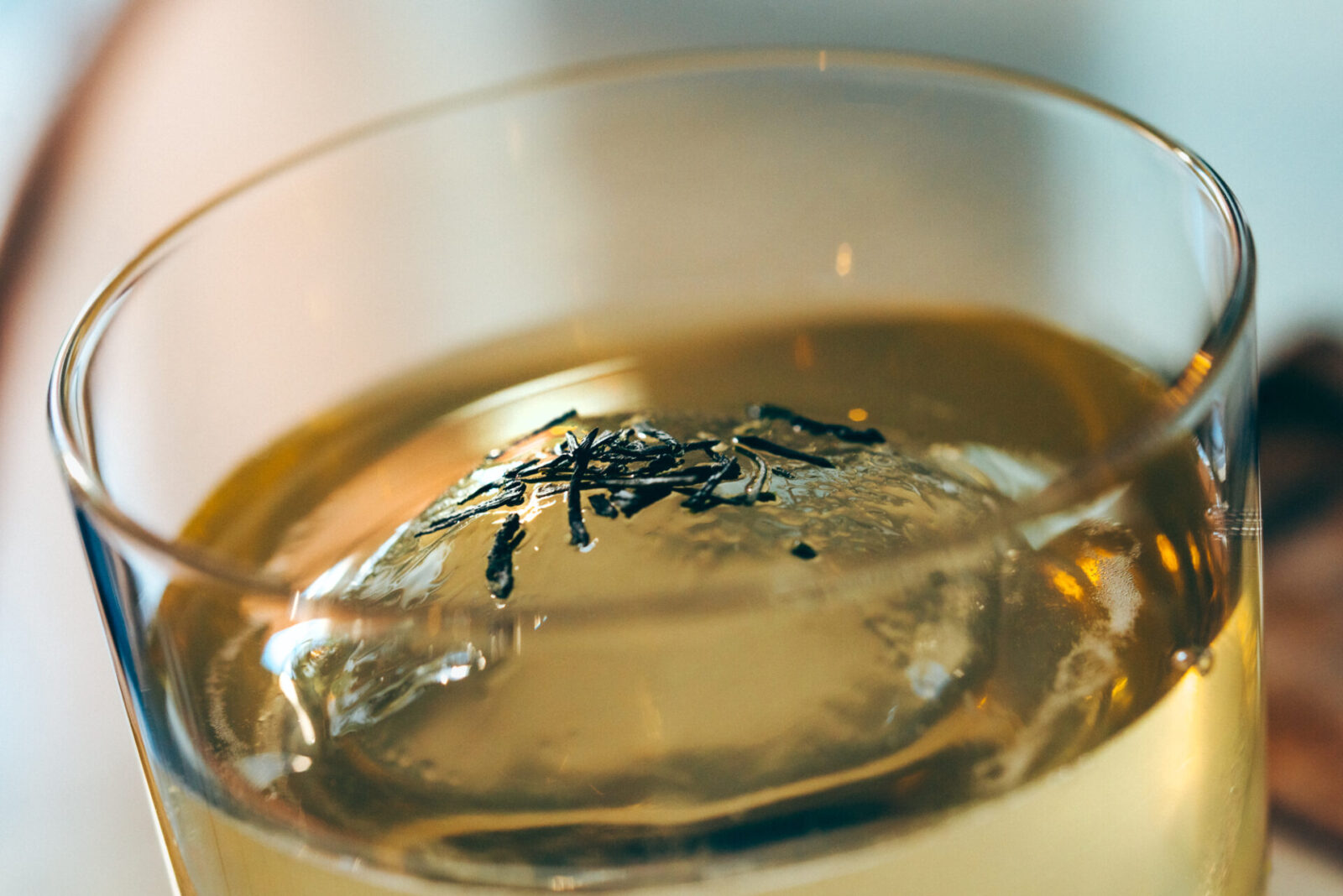
“It has a very light color, but the three different flavors and umami from the vegetables, dashi and sencha create a harmonious synergy. There is also a slight thickness to the drink that comes from the umami of the fish.”
“This drink is simply a combination of three strong flavors with distinct umami. Because tomato and fish create strong dashi and umami, I think it will also go well with a sencha tea that has a stronger tannin.”
A cocktail featuring the rich aroma of Awabancha tea
We asked Ohba to make us an original tea cocktail using Awabancha tea.
The cocktail will be a combination of sake and Kamikatsu Awabancha tea, a rare traditional lacto-fermented tea from Kamikatsu City of Tokushima Prefecture. The Awabancha Tea was made by the DIG THE TEA Experiments team through the Awabancha Barrel Owner Program.
We were curious to find out what kind of flavor Ohba would create out of our Awabancha tea.
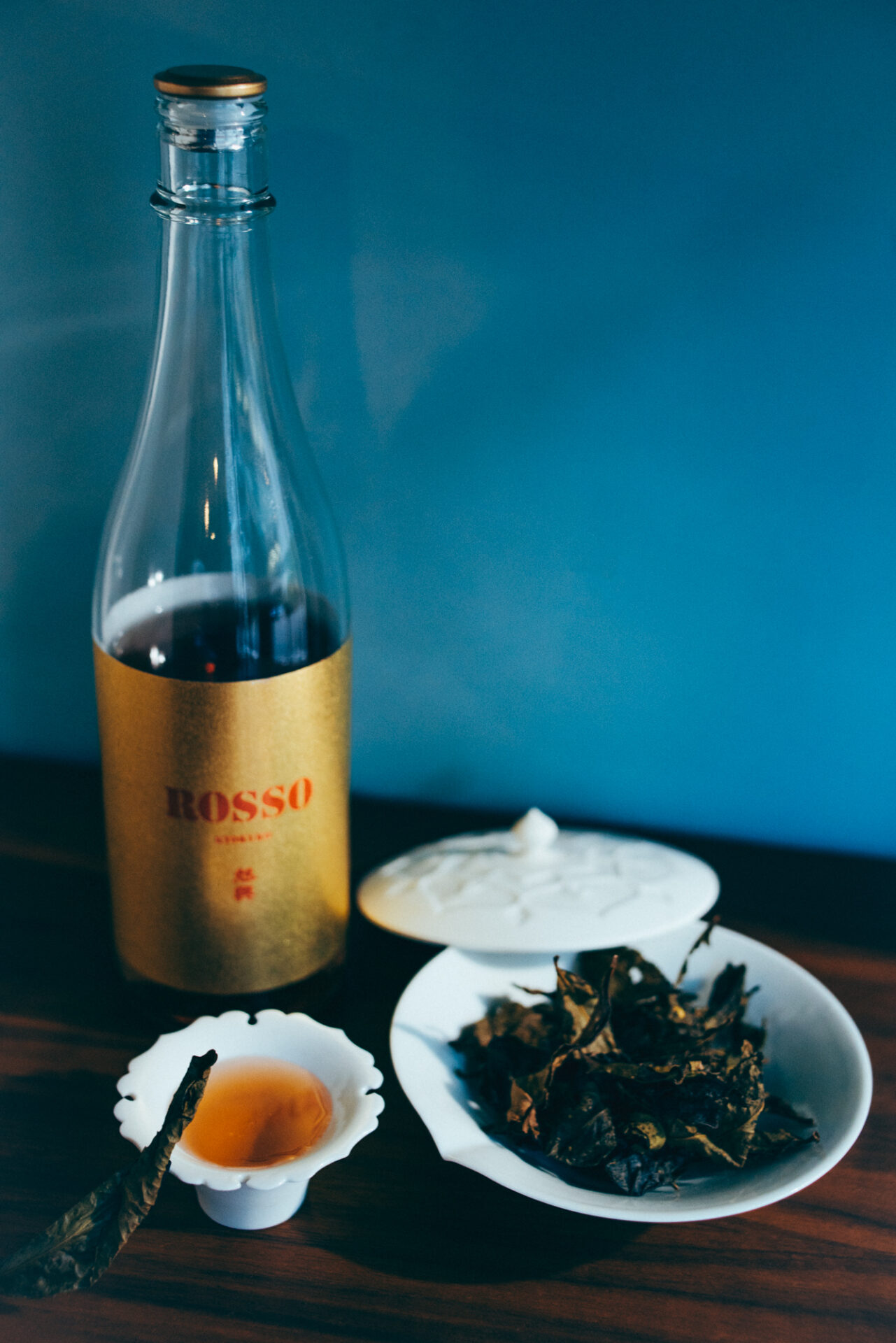
When we tasted the finished tea cocktail, we were surprised to find that it had an even more mellow and fragrant flavor than when we tasted the Awabancha tea on its own. The red rice sake left a lingering sweet flavor in the mouth and the whole drink had a fruity sweet and sour taste that was similar to wine.
It was so incredibly delicious, we could not help but exclaim in delight.
Ohba said, “When I first heard that the DIG THE TEA team had made Awabancha tea themselves, I was very surprised. When I brewed it I was very impressed by its sweet and sour flavor and it exceeded my expectations.”
Ohba selected a sweet sake Kyokuko ROSSO Kimoto 99 to match with the sweetness of the Awabancha tea.
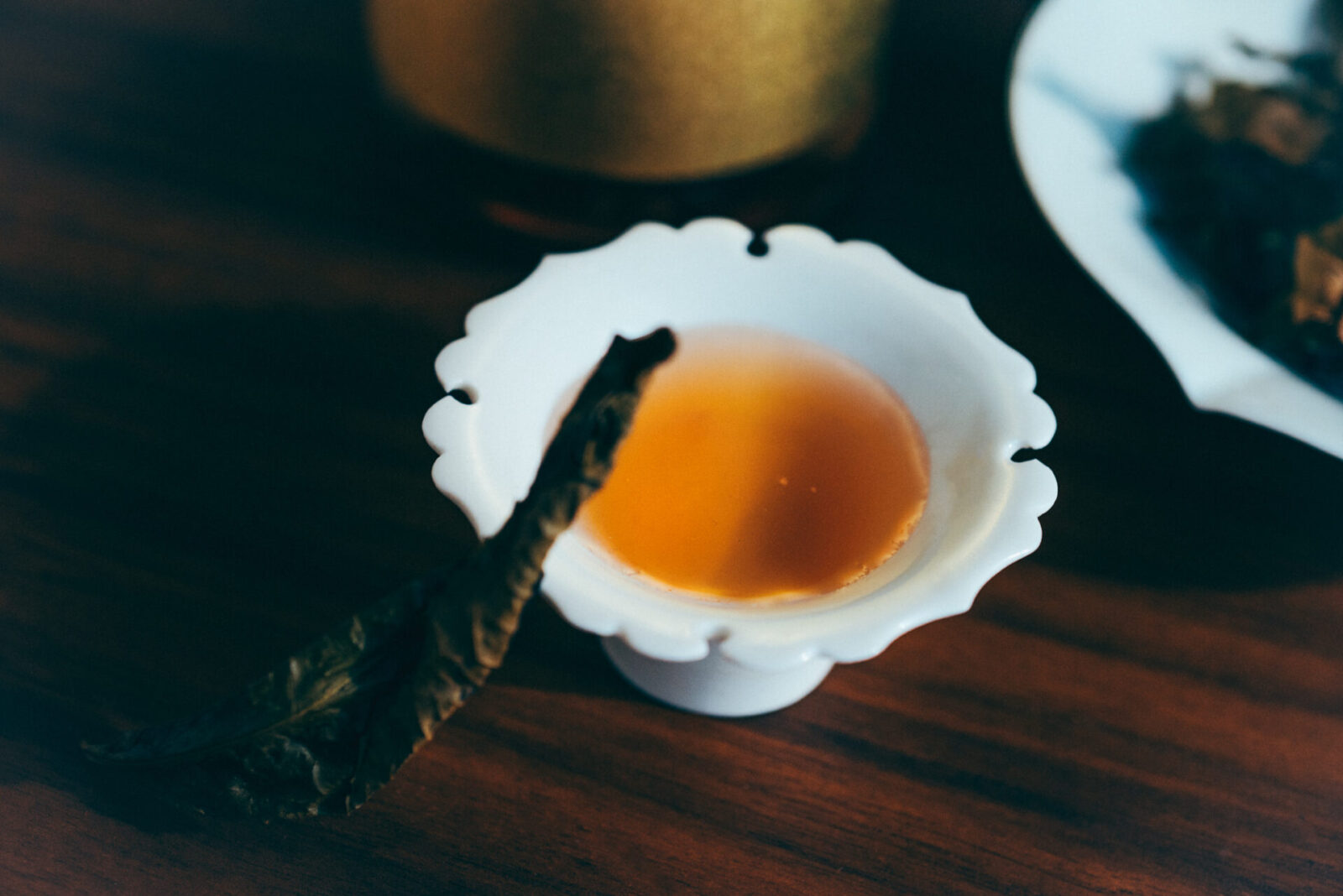
“This sake uses a 99 percent polished heirloom red rice called Kimoto that is aged in oak barrels that were used in wineries. It is characterized by its brandy-like fragrance.”
“The Awabancha tea has a nice balance of sweet and sour, so combining it with Japanese sake offsets the sour flavor and it allows one to enjoy the lingering flavors of the tea.”
Making the cocktail is similar to the process of brewing tea. First, 3 grams of Awabancha tea is added to about 200 millileters of sake and soaked at room temperature for 12 to 24 hours. Because the alcohol brings out the flavors more strongly than brewing tea in hot water, Ohba says that the flavors and aroma comes out more quickly.
“You can also brew it in lukewarm sake (about 40 degrees Celsius) for about 3 minutes. I think this tea will also go well with a reasonably priced sweet white wine like Sauternes from France.”

Finding new appeal in familiar drinks
Ohba became independent in 2020 and he has collaborated with major coffee shops and beverage companies to develop new drinks.
In April of 2023, he will open his own restaurant unknown in Ebisu, Tokyo.
His bar will offer original cocktails based on Japanese liquors such as whiskey, gin and vodka, including tea cocktails that are accented with Japanese, Chinese and Taiwanese teas.
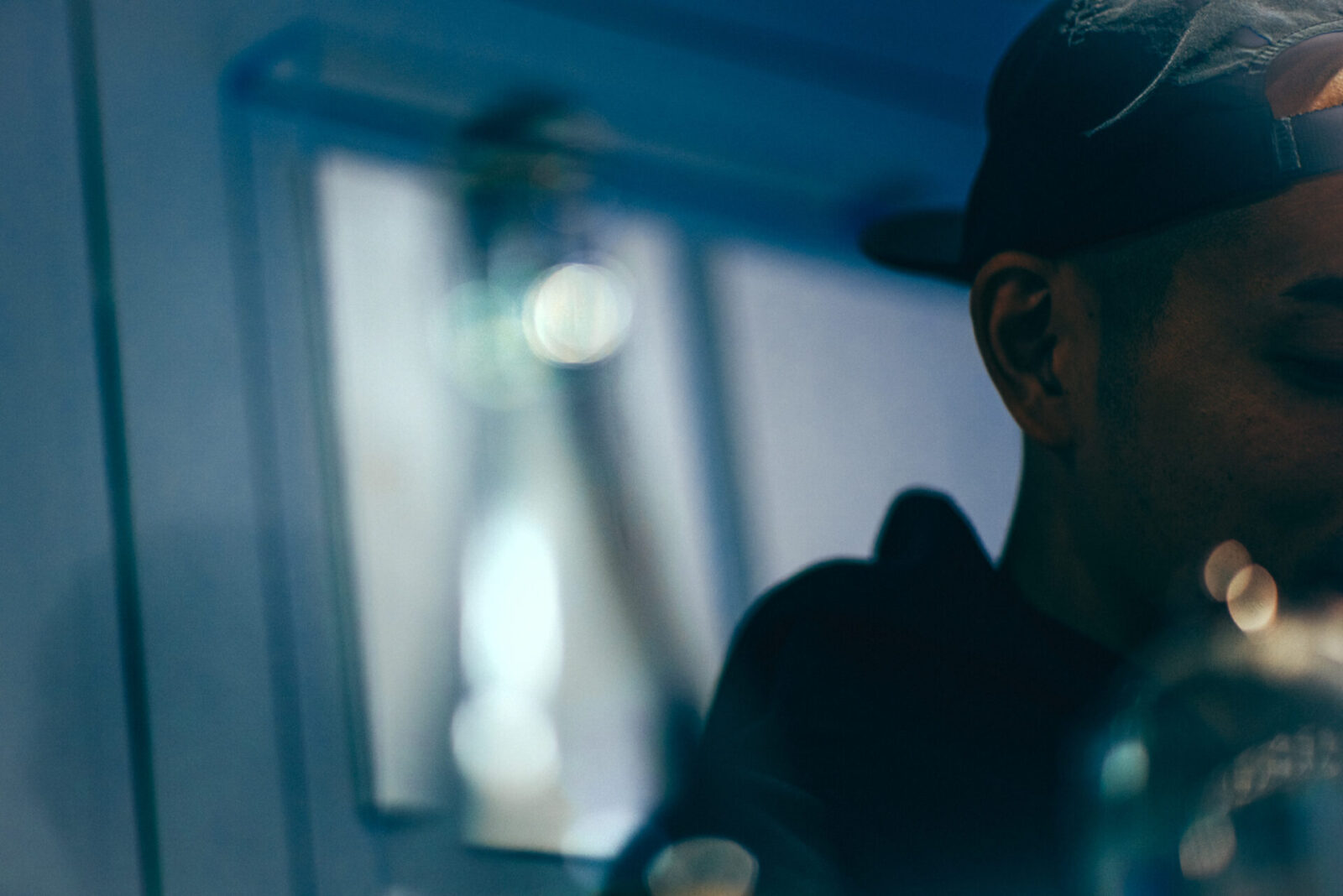
“I chose the name unknown for my restaurant because I hope people will experience something new, or discover a new dynamic to things they are familiar with from the past. This is true for myself, but I think there are a lot of attractive things in Japan that even Japanese people do not know about.”
“I hope this restaurant will be a place where not only people from overseas experience something that is uniquely Japanese, but also a place for Japanese customers to discover a new way to enjoy Japanese sake and tea.”

Ohba aims to create new experiences with familiar ingredients such as tea and sake. What kind of moments of time does he hope to provide?
“Some examples are gin combined with a strong bergamot and the flavor of tea, or campari, gin and a sweet wine combined with hojicha (roasted tea). Adding tea, spices and herbs to a classic cocktail base gives it a very modern twist.”
“I think that the addition of tea and spices to cocktails will give people who are familiar with cocktails a new experience, and for people who are not so familiar with cocktails, such as the younger generation, the introduction of tea in the cocktails will make it easier for them to give cocktails a try.”
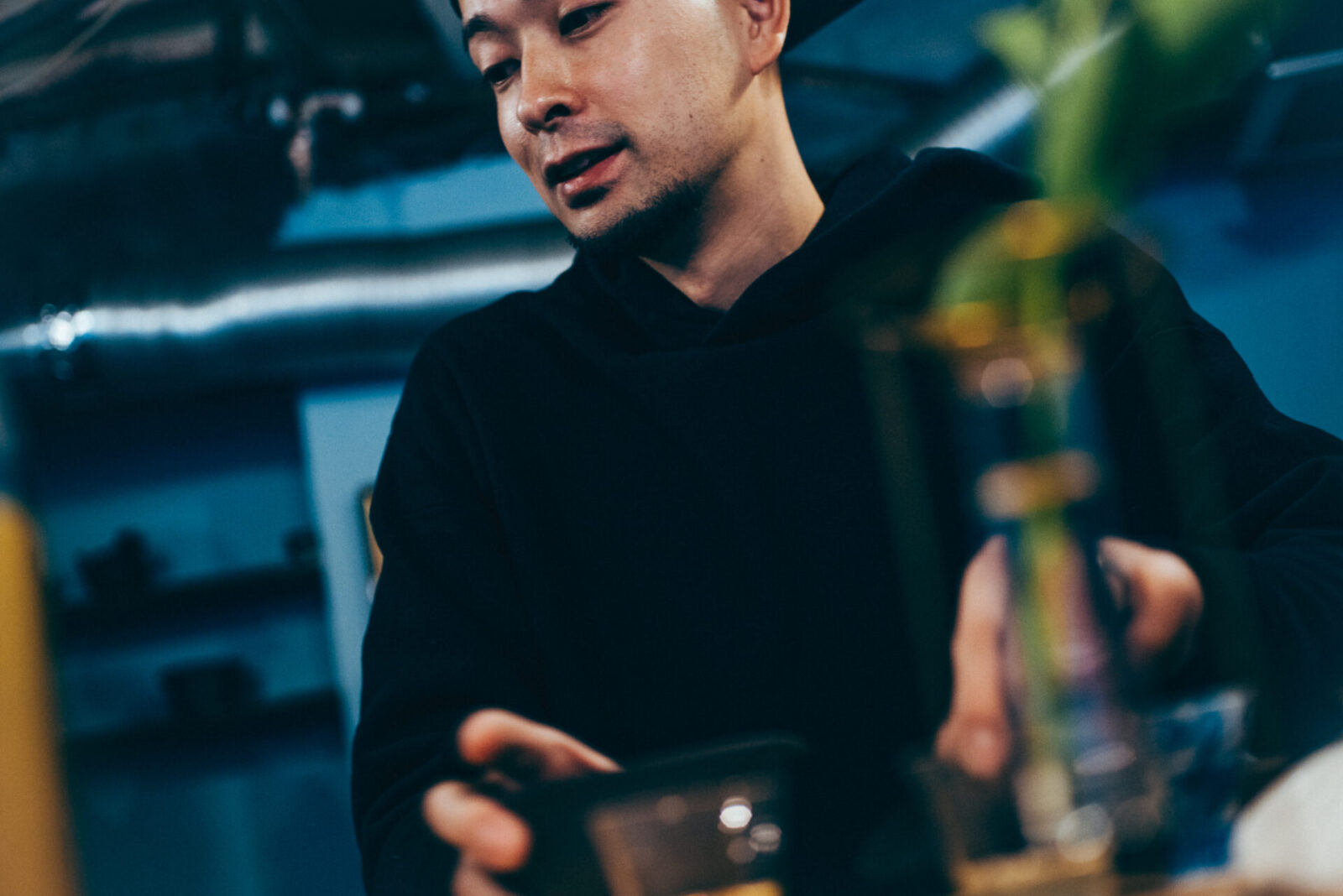
Ohba started his career in bars and developed his skills through state of the art mixology cocktail techniques. After diving into the world of Japanese tea at a tea specialty shop and working at a world renowned restaurant, he attained the craft of pairing drinks.
Now, he continues to explore the endless possibilities of tea cocktails.
Everything has led to the opening of his new restaurant unknown and we look forward to experiencing it.
Photo: Kaori Nishida
After taking a food sensory test during university and discovering a keen sensitivity to “umami”, she traveled for food in and out of Japan for 25 years. While working at a publishing company, she was in charge of the gourmet food section of a fashion magazine. Later, she worked for an informational magazine before becoming independent in 2013. Now she writes articles and has a series on food for online and printed mazagines.
Editor. Born and raised in Kagoshima, the birthplace of Japanese tea. Worked for Impress, Inc. and Huffington Post Japan and has been involved in the launch and management of media after becoming independent. Does editing, writing, and content planning/production.
